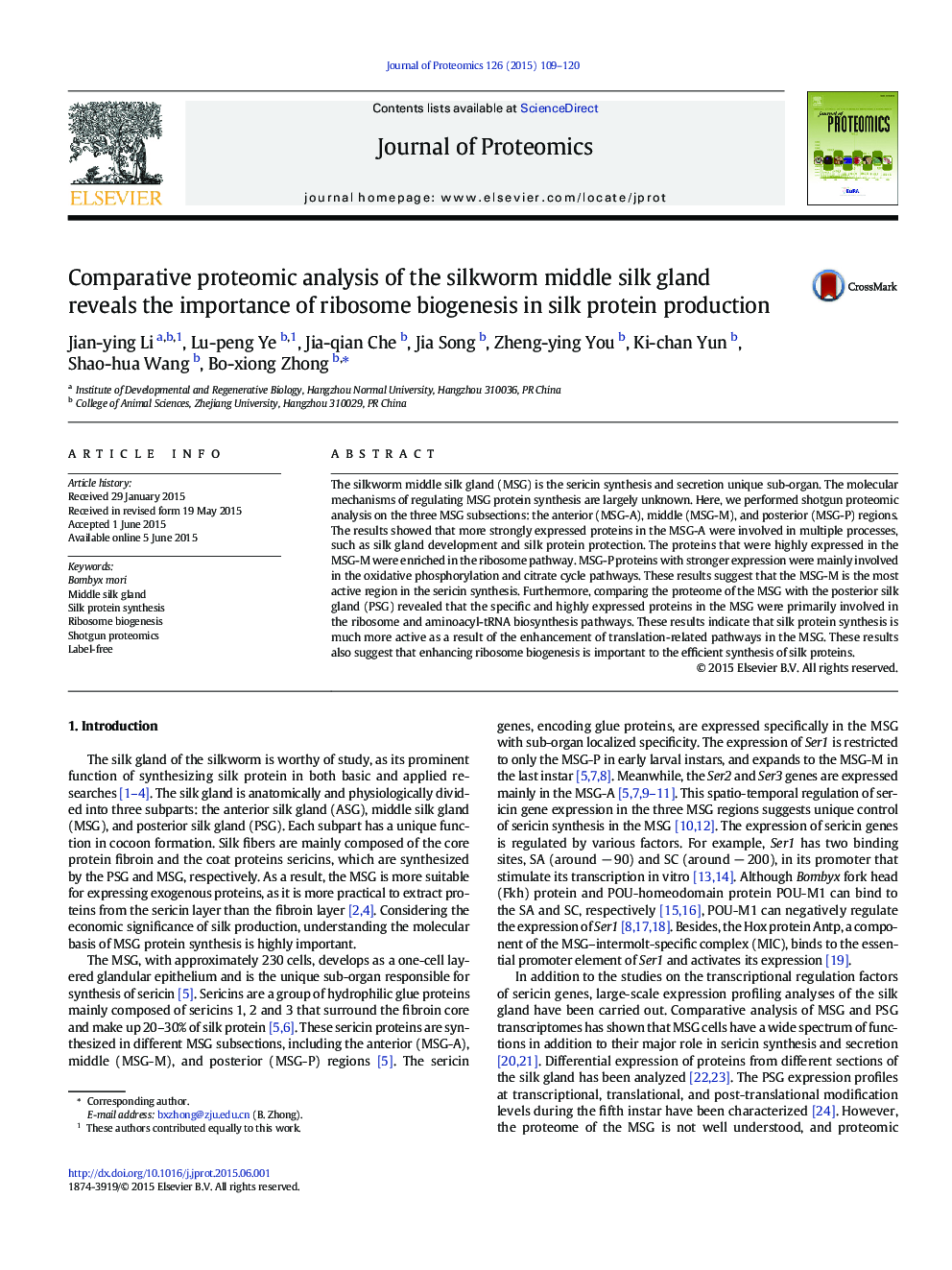| کد مقاله | کد نشریه | سال انتشار | مقاله انگلیسی | نسخه تمام متن |
|---|---|---|---|---|
| 1225509 | 1494754 | 2015 | 12 صفحه PDF | دانلود رایگان |
• The MSG-A has important roles in silk gland growth and silk protein protection.
• The MSG-M is the most active in sericin synthesis by enhanced ribosome biogenesis.
• The MSG-P may be important for silk gland expansion by enhanced energy metabolism.
• MSG is more active than PSG in silk protein synthesis at the early fifth instar.
The silkworm middle silk gland (MSG) is the sericin synthesis and secretion unique sub-organ. The molecular mechanisms of regulating MSG protein synthesis are largely unknown. Here, we performed shotgun proteomic analysis on the three MSG subsections: the anterior (MSG-A), middle (MSG-M), and posterior (MSG-P) regions. The results showed that more strongly expressed proteins in the MSG-A were involved in multiple processes, such as silk gland development and silk protein protection. The proteins that were highly expressed in the MSG-M were enriched in the ribosome pathway. MSG-P proteins with stronger expression were mainly involved in the oxidative phosphorylation and citrate cycle pathways. These results suggest that the MSG-M is the most active region in the sericin synthesis. Furthermore, comparing the proteome of the MSG with the posterior silk gland (PSG) revealed that the specific and highly expressed proteins in the MSG were primarily involved in the ribosome and aminoacyl-tRNA biosynthesis pathways. These results indicate that silk protein synthesis is much more active as a result of the enhancement of translation-related pathways in the MSG. These results also suggest that enhancing ribosome biogenesis is important to the efficient synthesis of silk proteins.
Figure optionsDownload high-quality image (269 K)Download as PowerPoint slide
Journal: Journal of Proteomics - Volume 126, 3 August 2015, Pages 109–120
